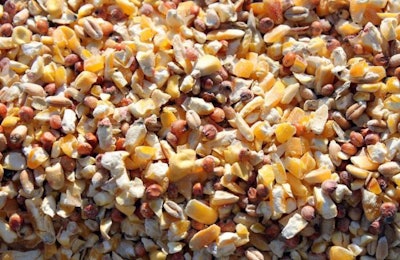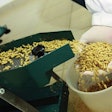
Following the blog from last week, I thought it would make sense to talk about which natural ingredients can be used as a source of branched-chain amino acids. In most feed ingredients, only excess leucine may become problematic. Such leucine-rich ingredients include blood products (red blood cells, blood meal and plasma protein) and several protein concentrates (corn gluten meal, potato protein). Surprisingly, corn and sorghum grains contain about as much leucine as red blood cells when concentrations are expressed in grams of leucine per 100 grams of protein.
In contrast, all cereal grains are low in isoleucine, with corn containing the least amount (0.28 percent). In contrast, higher protein feed ingredients contain relatively high amounts of isoleucine, with the exception of red blood cells and blood meal, which are extremely low in this amino acid. Red blood cells contain only 0.53 grams isoleucine/100 grams crude protein (CP), whereas corn and soybean meal, for example, contain 3.37 and 4.54 grams/100 grams CP, respectively. Red blood cells, a co-product in the manufacture of animal plasma protein, are valuable in isoleucine requirement titration studies because they allow formulation of isoleucine-deficient diets that can support optimal performance when properly fortified with crystalline isoleucine.
The concentration of valine in feed ingredients does not fluctuate as much as the concentrations of the other two branched-chain amino acids.
The concentration of valine in feed ingredients does not fluctuate as much as the concentrations of the other two branched-chain amino acids. Corn grain contains 0.39 percent valine, whereas red blood cells contain as much as 8.50 percent valine. Legume seeds and their meals have an intermediate concentration of valine, whereas oilseed meals and meat meals are relatively richer. Animal-derived protein concentrates tend to be higher than plant-based ones. The ingredient with the lowest amount of valine is gelatin. Although an uncommon ingredient in animal diets, gelatin can be used successfully in valine dose-titration studies because it contains only 2.55 grams valine/100 grams CP. In comparison, corn and soybean meal contain about 4.69 and 4.77 grams/100 grams CP, respectively. Ingredients rich in valine include red blood cells (9.23 grams/100 grams CP), skim milk, lentils, oat groats, plasma protein and potato protein.

















